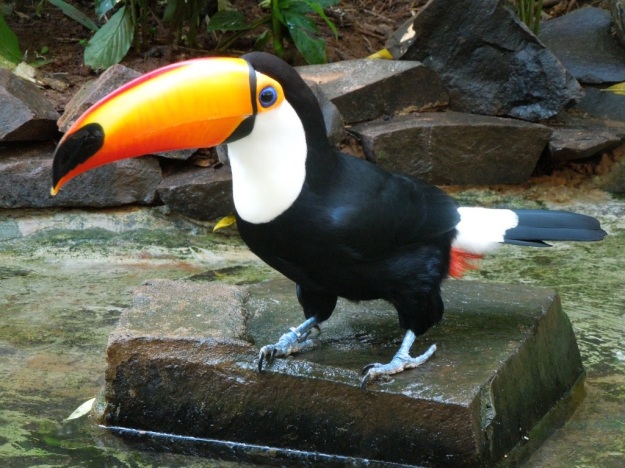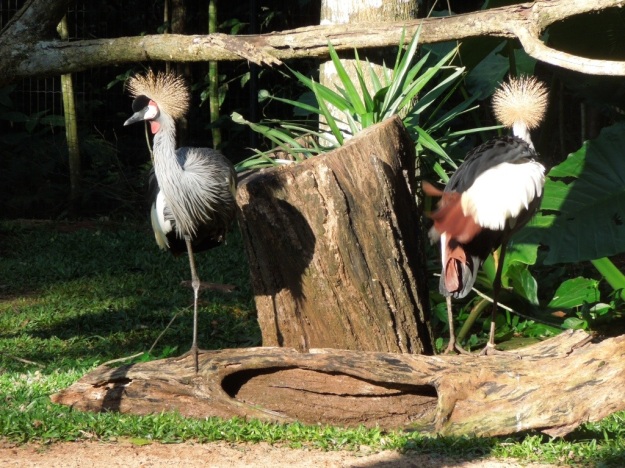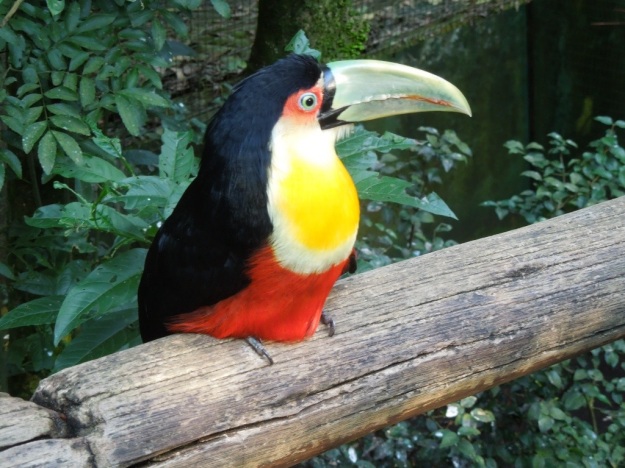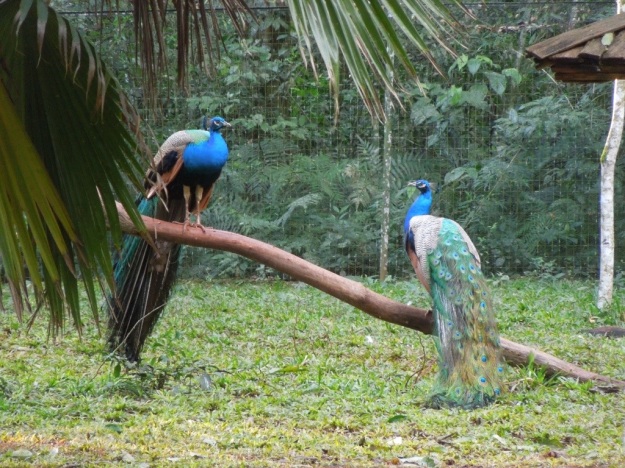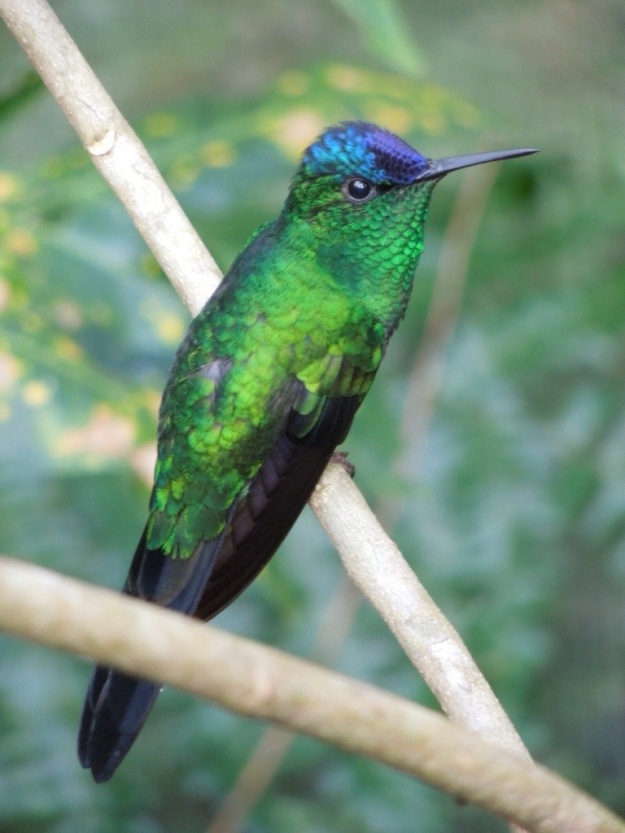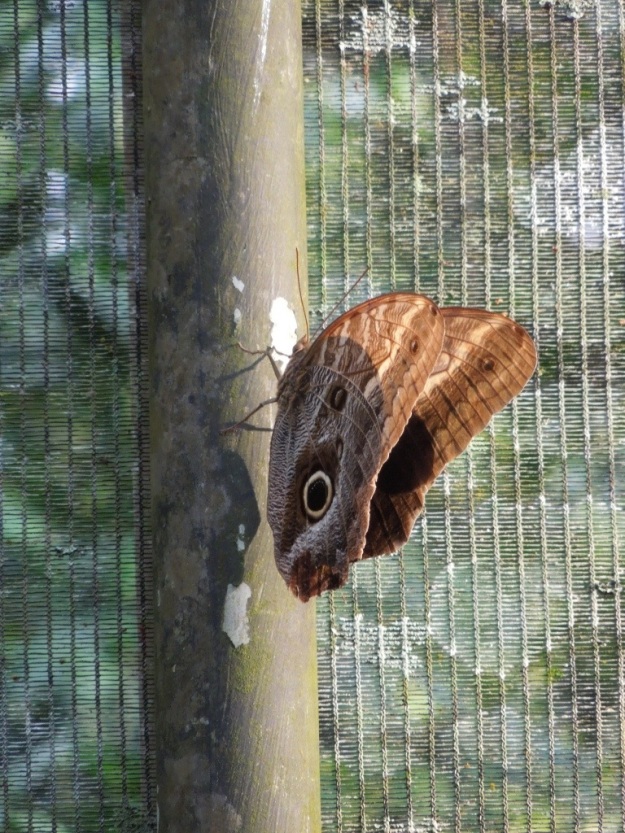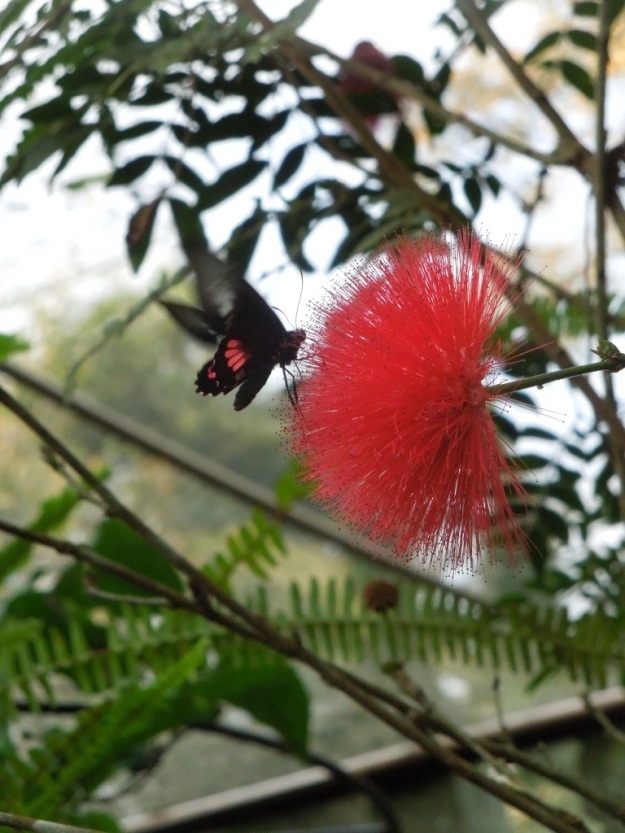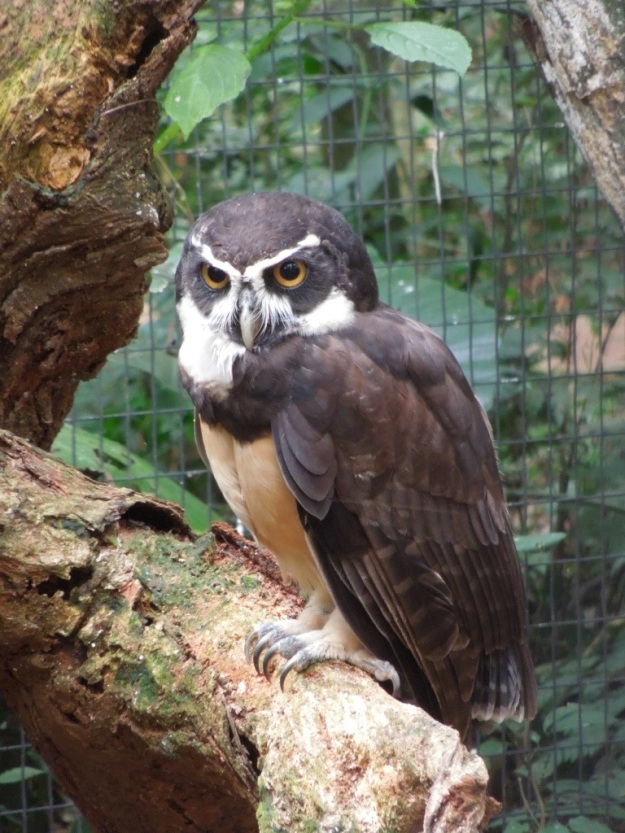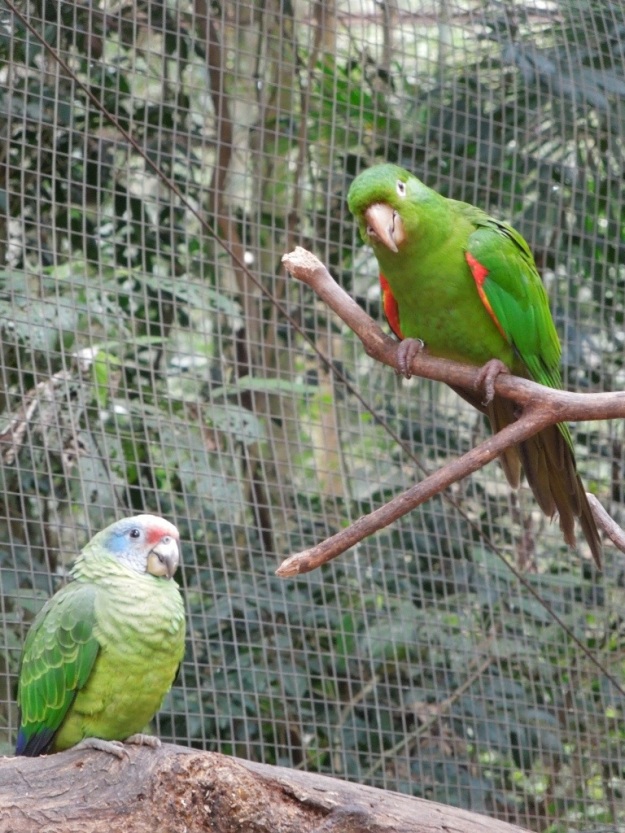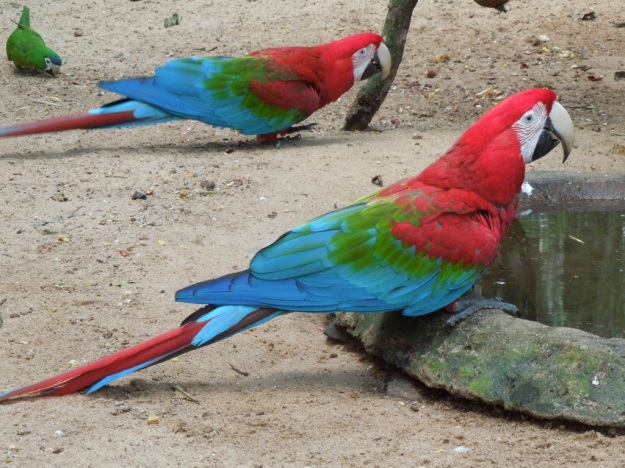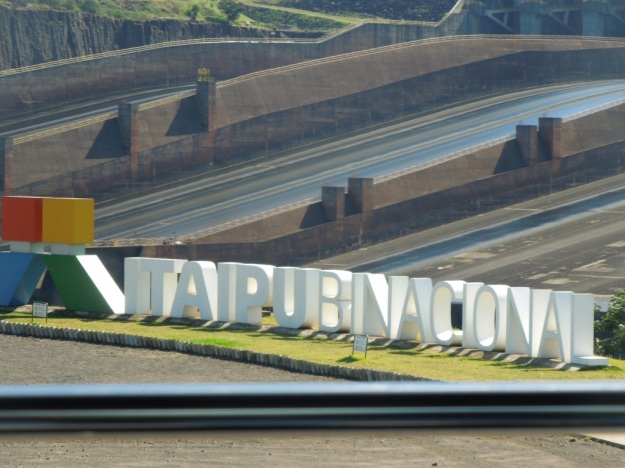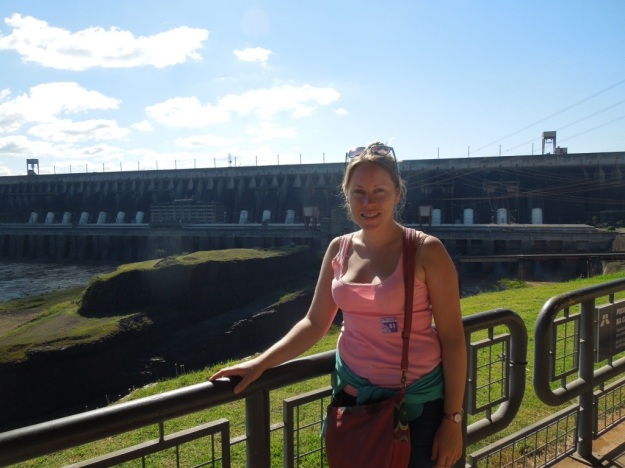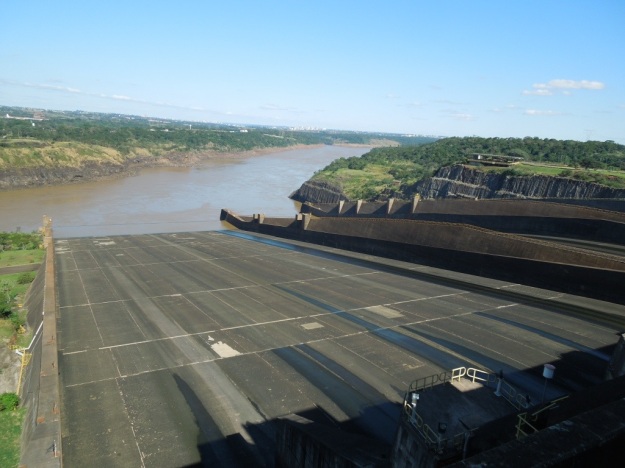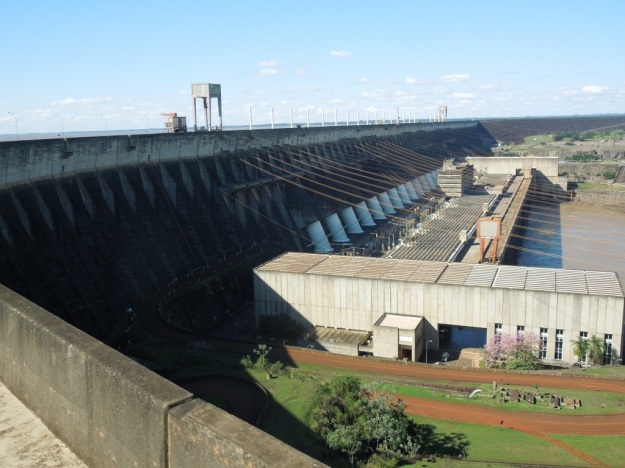On leaving Puerto Iguazú in Argentina, I didn’t go very far: just across the border to Foz do Iguaçu in Brazil. Although I had already seen the Iguazú Falls from this side, there were other sights of potential interest.
First, I headed to the Parque das Aves, the bird park that ironically turned out to be just a short walk from the waterfalls, so that it would have been much more efficient to combine the visits in one day. It was also the weekend, so local families were lining up at the ticket office when I arrived.
I’m not keen on going to see animals in cages – since my safari experience of seeing the animals in the wild in Africa, I no longer enjoy going to zoos (a small enclosure in Sweden is not a natural habitat for lions) – but I really wanted to see a toucan, having failed to spot a single one in the national park. In fact, the Parque is more of a bird sanctuary. They take in birds that have been rescued from poachers and illegal traders, and release them back into the wild when the birds are ready to survive on their own. And I spent much longer there than I had intended!
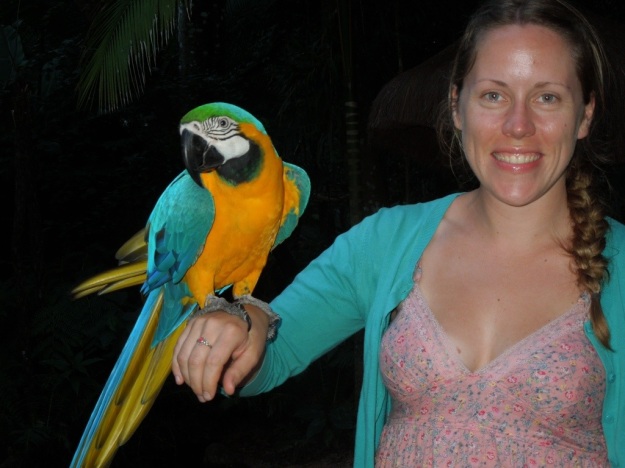
The next excursion in Foz was to Itaipú Dam, voted as one of the Seven Wonders of the Modern World by the American Society of Civil Engineers. (The others that I’ve visited: the Golden Gate Bridge, the Empire State Building and the Channel Tunnel; and those that I haven’t: the CN Tower in Toronto, the Delta Works in the Netherlands and the Panama Canal.) Unfortunately, the construction of the dam left 10,000 local families without a home, and flooded the Guaíra Falls, which had been a significant tourist attraction, as the largest falls in the world in terms of volume of water. Although the dam is no longer the biggest in the world – Three Gorges in China took that title when completed in 2012 – they say it is “the world’s largest generator of renewable energy“. Half of the electricity generated powers 75% of Paraguay’s energy (all of which is hydroelectric), while half powers 25% of Brazil’s energy. They are also building a university, which will house 10,000 students.

At the bus terminal in Foz, I had an existential crisis as to where I should go next: to Río or not to Río? That was the question. I hadn’t intended to go to Brazil on all this trip – it’s a big country that warrants a whole separate trip, with a whole other language to learn – but I was sooooo close to Saõ Paolo, which is sooooo close to Río. What to do, what do do…?

